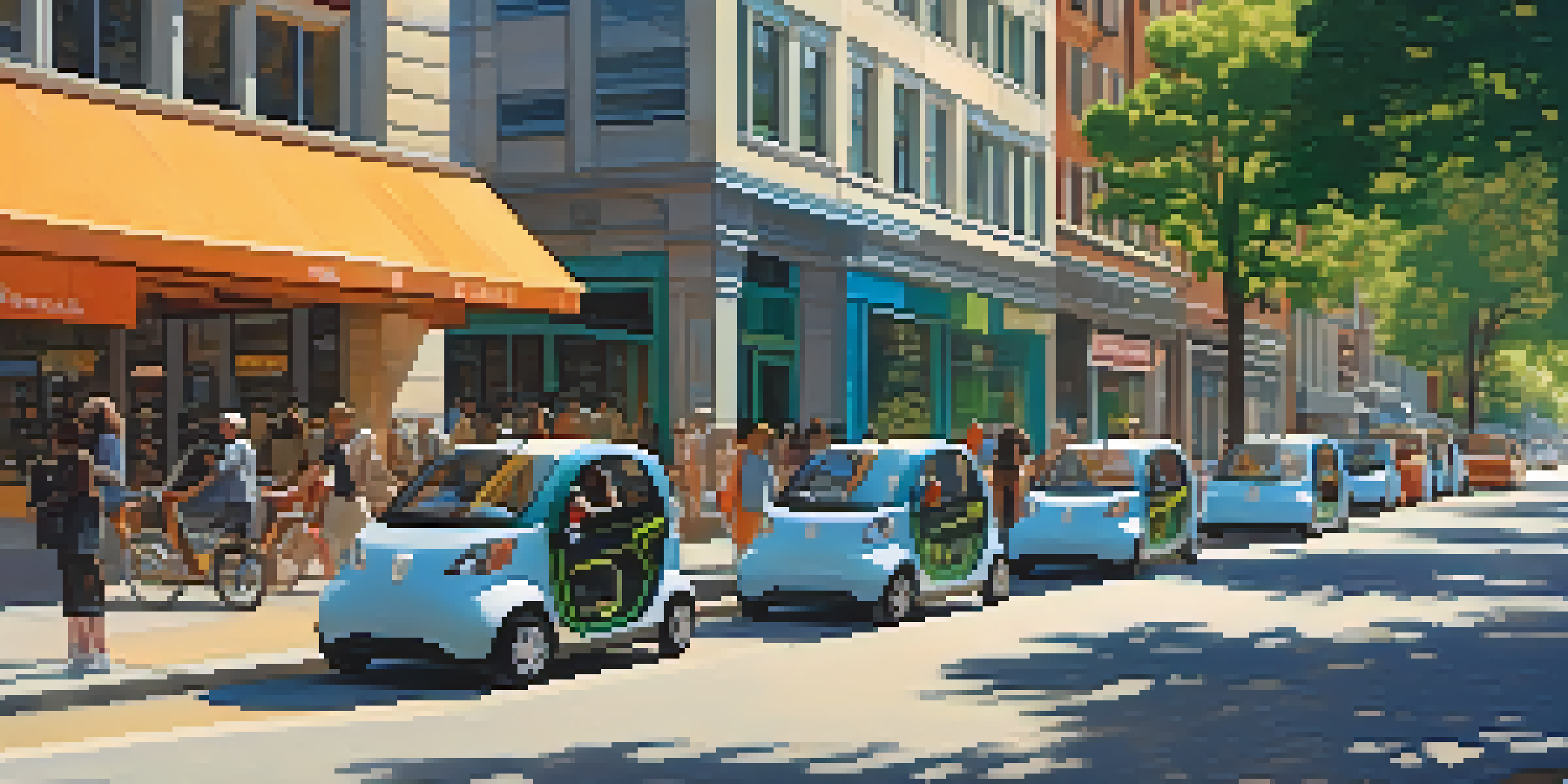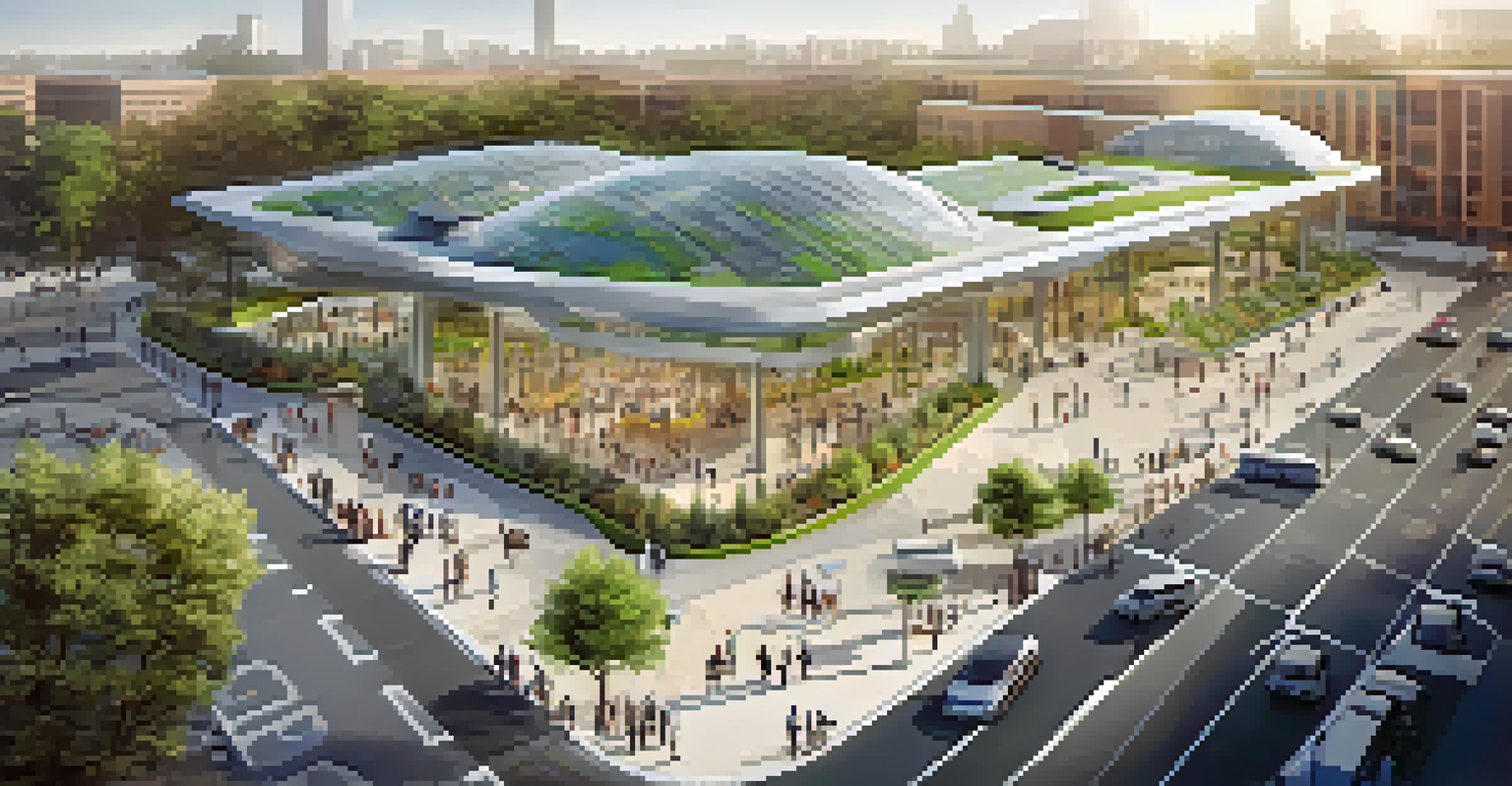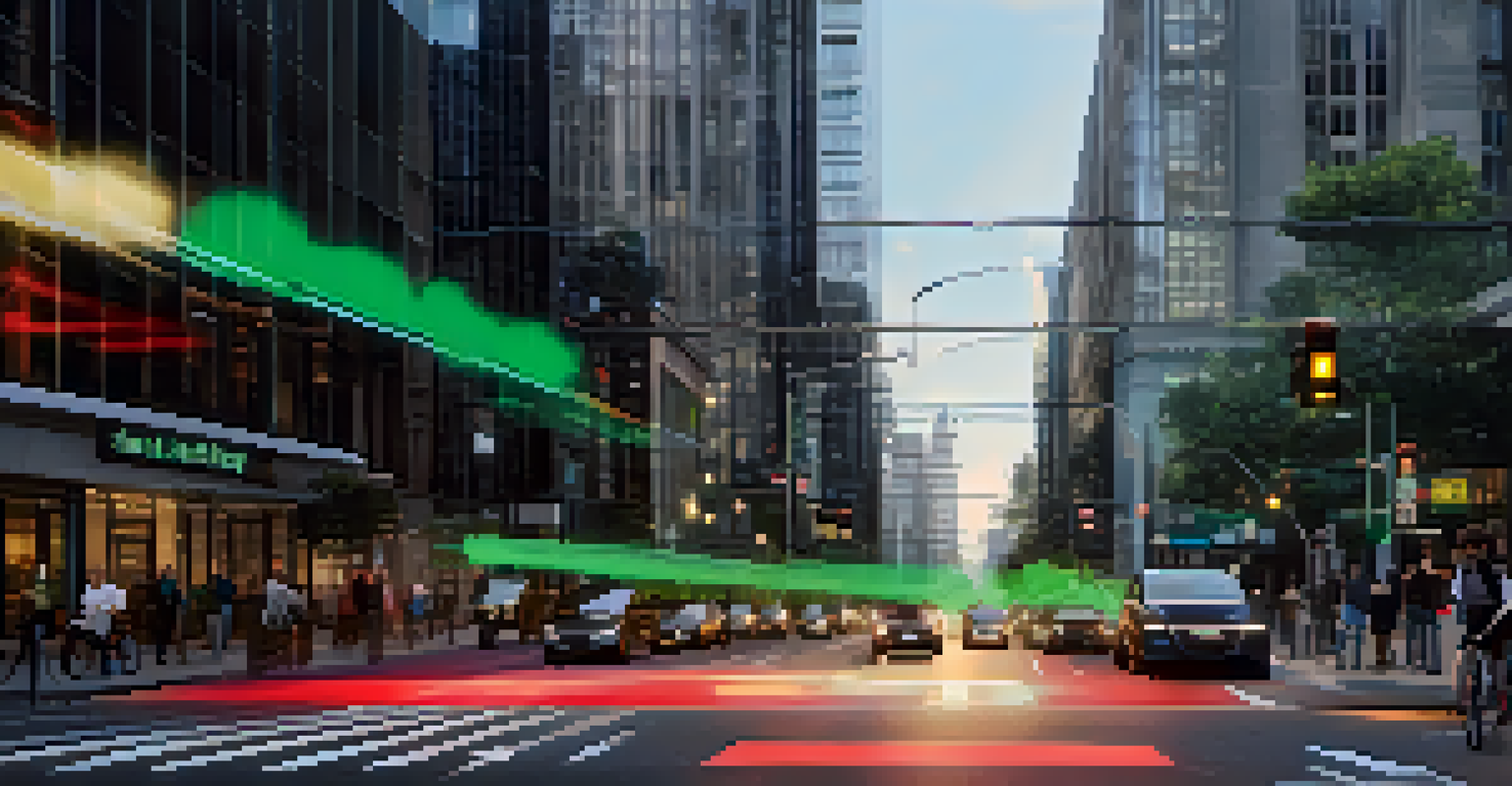Urban Mobility: Future Trends in City Transportation

The Rise of Electric Vehicles in Urban Areas
Electric vehicles (EVs) are transforming the way we navigate cities. With their eco-friendly nature, EVs reduce air pollution and contribute to cleaner urban environments. As battery technology improves and charging infrastructure expands, more people are making the switch to electric, signaling a shift in urban transportation.
The future belongs to those who believe in the beauty of their dreams.
Cities are responding to this trend by investing in EV-friendly policies, including incentives for both consumers and manufacturers. For instance, many municipalities are offering tax breaks for electric car purchases and funding the installation of charging stations. This not only makes EVs more accessible but also encourages a culture of sustainable transport.
Moreover, as ride-sharing services increasingly adopt electric fleets, the impact of EVs on urban mobility is magnified. This shift not only enhances the convenience of getting around but also aligns with broader goals of reducing traffic congestion and greenhouse gas emissions, making cities more livable.
Smart Technology: Revolutionizing City Transport Systems
Smart technology is at the forefront of revolutionizing urban transport systems. From traffic management to public transit, cities are leveraging data and connectivity to enhance mobility. For example, smart traffic lights that adjust based on real-time traffic conditions can reduce congestion and improve travel times significantly.

Additionally, mobile apps are making public transportation more user-friendly. Passengers can now track buses and trains in real-time, plan their routes efficiently, and even pay for fares through their smartphones. This integration of technology not only improves the user experience but also encourages more people to choose public transport over personal vehicles.
Electric Vehicles Improve Urban Life
Electric vehicles reduce air pollution and enhance urban mobility as cities adopt supportive policies and infrastructure.
As cities continue to embrace smart technology, we can expect more innovations, such as autonomous vehicles and connected infrastructure. These advancements will not only streamline urban mobility but also pave the way for safer and more efficient transportation systems.
The Emergence of Micromobility Solutions
Micromobility solutions, like e-scooters and bike-sharing programs, are rapidly gaining traction in urban environments. These options provide a flexible and convenient way for individuals to navigate short distances, alleviating pressure on public transport and reducing reliance on cars. Imagine a busy city where hopping on an e-scooter to reach your destination is as easy as ordering a coffee.
Sustainability is no longer about doing less harm. It's about doing more good.
Many cities are recognizing the benefits of micromobility and are developing infrastructure to support it, such as dedicated bike lanes and parking zones. This not only enhances safety for riders but also encourages more people to consider these alternatives. In fact, studies have shown that micromobility can serve as the perfect complement to existing transport networks.
As urban planners continue to integrate micromobility into their transportation strategies, we can expect to see a more interconnected and efficient urban transport landscape. This trend not only promotes a healthier lifestyle but also contributes to reducing traffic congestion and carbon emissions.
Public Transit: Innovations Driving Change
Public transportation is evolving rapidly, driven by technological innovations and changing commuter needs. With the rise of on-demand transit services, riders can now request shuttles or buses via apps, making public transport more accessible and convenient. This flexibility is crucial in attracting those who may have previously relied solely on personal vehicles.
Furthermore, cities are investing in modernizing their transit fleets with electric and hybrid vehicles, enhancing sustainability. This shift not only improves air quality but also demonstrates a commitment to greener urban living. As more riders opt for these eco-friendly options, the environmental impact of public transport continues to decrease.
Smart Tech Enhances Transport Systems
Smart technology is revolutionizing urban transport by improving traffic management and making public transit more user-friendly.
Moreover, cities are emphasizing the importance of integrating different modes of transport seamlessly. Creating multi-modal hubs where public transit, micromobility, and pedestrian pathways intersect can lead to a more cohesive urban transportation experience, ultimately encouraging more people to leave their cars behind.
Sustainable Urban Planning and Its Role in Mobility
Sustainable urban planning is key to shaping the future of urban mobility. By designing cities with walkability and accessibility in mind, planners can create environments that prioritize pedestrians and cyclists, reducing dependence on cars. Imagine strolling down a tree-lined street where everything you need is just a short walk away—this is the essence of sustainable city design.
Green spaces and mixed-use developments can also enhance urban mobility by providing residents with easy access to essential services without the need for vehicles. This not only promotes a healthier lifestyle but also fosters a sense of community, as people are more likely to interact in shared spaces.
As cities around the world adopt sustainable planning practices, we can expect to see a shift towards more integrated and efficient urban transport systems. This holistic approach not only benefits individual residents but also contributes to the overall health of the planet.
The Role of Policy in Shaping Urban Mobility
Policy plays a crucial role in shaping the future of urban mobility. Governments at various levels are implementing regulations that encourage sustainable transport solutions, from subsidies for electric vehicles to strict emissions standards for public transport. These policies help create an environment where innovative mobility solutions can thrive.
Moreover, public engagement in the policymaking process is vital. When residents have a say in transportation planning, it ensures that the solutions implemented meet the actual needs of the community. For instance, hosting public forums can provide valuable insights into which transportation options are most desired, leading to more effective policies.
Collaboration is Key for Mobility Future
The future of urban mobility relies on collaboration between cities, private companies, and communities to create efficient transportation systems.
As cities continue to navigate the complexities of urban mobility, strong and forward-thinking policies will be essential. By prioritizing sustainability and community involvement, policymakers can help create transportation systems that are not only efficient but also equitable and environmentally friendly.
The Future of Urban Mobility: A Collaborative Effort
The future of urban mobility is not just about technology or infrastructure; it’s about collaboration. Cities, private companies, and communities must work together to create a transport ecosystem that meets the needs of all citizens. This collaborative approach can lead to innovative solutions that integrate various modes of transport seamlessly.
For example, partnerships between city governments and tech companies can drive advancements in smart mobility solutions, enhancing the overall transport experience. These collaborations can result in initiatives like shared mobility platforms that allow users to plan multi-modal routes using a single app, making travel more convenient.

Ultimately, a successful urban mobility strategy will require the collective efforts of all stakeholders. By embracing collaboration, cities can create transportation systems that are not only efficient but also adaptable to the ever-changing needs of urban populations.